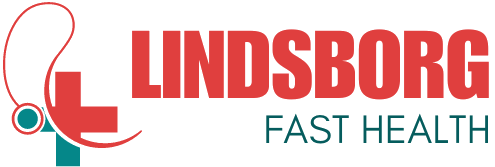Surgical Interventions
Arthroscopy Arthroscopic surgery utilizes minimally invasive techniques to visualize, diagnose, and treat joint problems. It involves inserting a narrow tube with a camera and surgical instruments through small incisions, reducing recovery time and complications.
Joint Replacement Joint replacement surgery, or arthroplasty, involves replacing damaged or diseased joints with prosthetic implants made of metal, plastic, or ceramic materials. It is commonly performed for severe arthritis affecting the hip, knee, or shoulder.
Fracture Repair Fracture management may involve closed reduction, where the bones are realigned without surgical intervention, or open reduction with internal fixation using plates, screws, or rods to stabilize the fracture fragments.
Specialized Areas within Orthopedics
Sports Medicine Sports medicine focuses on the prevention, diagnosis, and treatment of sports-related injuries and conditions. It encompasses injury rehabilitation, performance enhancement, and biomechanical analysis for athletes of all levels.
Pediatric Orthopedics Pediatric orthopedics specializes in the musculoskeletal care of children, addressing congenital abnormalities, growth-related conditions, and traumatic injuries unique to pediatric patients.
Geriatric Orthopedics Geriatric orthopedics caters to the specific needs of elderly individuals, addressing age-related changes in bone density, joint function, and mobility. It emphasizes fall prevention, osteoporosis management, and joint preservation techniques.
Orthopedic Oncology Orthopedic oncology deals with the diagnosis and treatment of bone and soft tissue tumors, including benign and malignant neoplasms. It requires a multidisciplinary approach involving surgical oncologists, radiation oncologists, and medical oncologists.
VII. Advances in Orthopedic Technology
Robotics in Orthopedic Surgery Robotic-assisted surgery enhances precision and accuracy in orthopedic procedures, allowing for optimal implant placement and tissue sparing. Robotics enable surgeons to perform complex maneuvers with enhanced dexterity and control.
3D Printing Applications 3D printing technology revolutionizes orthopedic implant manufacturing, enabling customized implants tailored to each patient’s anatomy. It offers cost-effective solutions for complex cases and facilitates rapid prototyping of surgical instruments and models.
Minimally Invasive Techniques Minimally invasive surgery reduces surgical trauma, postoperative pain, and recovery time compared to traditional open procedures. It involves smaller incisions, specialized instruments, and advanced imaging for enhanced visualization.
Biologics and Regenerative Medicine Biologic therapies harness the body’s natural healing mechanisms to regenerate damaged tissues and promote musculoskeletal repair. Platelet-rich plasma (PRP), stem cell therapy, and growth factors hold promise for enhancing tissue healing and reducing inflammation.

VIII. Rehabilitation and Recovery
Importance of Rehabilitation Rehabilitation is integral to restoring function and mobility following orthopedic procedures or injuries. It focuses on strengthening muscles, improving flexibility, and retraining movement patterns to optimize recovery outcomes.
Physiotherapy Techniques Physiotherapy encompasses a range of modalities, including manual therapy, exercise prescription, electrotherapy, and hydrotherapy. Individualized treatment plans target specific impairments and functional limitations to maximize rehabilitation potential.
Rehabilitation Duration and Goals The duration of rehabilitation varies depending on the nature and severity of the orthopedic condition. Short-term goals may focus on pain relief and swelling reduction, while long-term goals aim for functional independence and return to pre-injury activities.
IX. Preventive Orthopedics
Lifestyle Modifications Healthy lifestyle choices, including regular exercise, balanced nutrition, and weight management, play a crucial role in preventing orthopedic conditions such as osteoporosis, osteoarthritis, and musculoskeletal injuries.
Injury Prevention Strategies Preventive measures such as proper warm-up, stretching, and conditioning help reduce the risk of sports-related injuries and repetitive strain injuries. Education on ergonomic principles and workplace safety practices minimizes the incidence of occupational hazards.
Ergonomics and Posture Awareness Maintaining ergonomic workstations and practicing good posture promote musculoskeletal health and prevent chronic conditions like back pain, neck strain, and carpal tunnel syndrome. Ergonomic assessments and adjustments optimize comfort and productivity in various settings.
X. Holistic Approaches to Orthopedic Care
Nutrition and Bone Health Adequate intake of calcium, vitamin D, protein, and other essential nutrients supports bone health and density, reducing the risk of fractures and osteoporosis. Dietary supplements and fortified foods may complement dietary deficiencies in high-risk individuals.
Mind-Body Connection Mind-body practices such as yoga, tai chi, and mindfulness meditation enhance physical and emotional well-being, alleviating stress, and promoting relaxation. Integrating mind-body therapies with conventional orthopedic care improves pain management and overall outcomes.
Integrative Medicine Practices Integrative medicine combines conventional treatments with complementary therapies such as acupuncture, chiropractic care, and herbal medicine. It addresses the holistic needs of patients, emphasizing personalized care and patient empowerment.
XI. Orthopedics in the Digital Age
Telemedicine and Virtual Consultations Telemedicine platforms enable remote consultations, diagnostics, and follow-up care, enhancing accessibility and convenience for patients with orthopedic concerns. Virtual rehabilitation programs facilitate home-based exercises and monitoring, promoting adherence to treatment plans.
